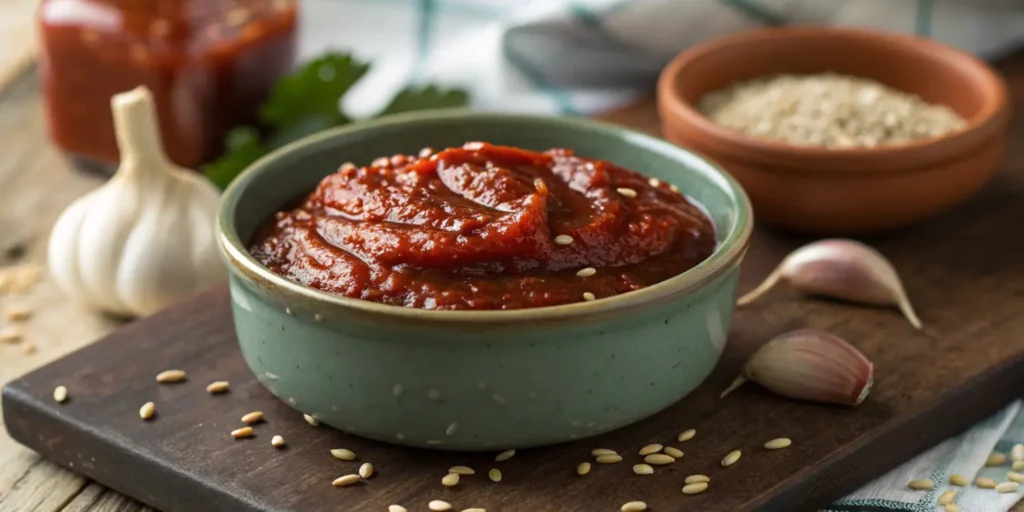
Table of Contents
What is Yangnyeom? Unpacking the Flavorful Korean Sauce
If you’ve ever wondered about the secret behind Korea’s beloved dishes that blend sweet, spicy, and savory, it all comes down to yangnyeom. This sauce, at once spicy and mildly sweet, has a texture and taste that elevate Korean dishes, whether they’re found on the streets of Seoul or recreated at home. With the perfect balance of flavors, yangnyeom—meaning “seasoned” or “flavored” in Korean—has become a favorite for those who enjoy dishes that are layered with flavor.
Korean food has always embraced bold, unique flavors, and korean spicy sauce is no exception. You’ll see this seasoning on classic fried chicken, tofu, vegetables, and even grilled meats, lending an addictive kick. But this flavorful blend isn’t just a sauce; it’s a part of Korean culture that tells a story with every bite. Its ability to harmonize sweet and spicy elements makes it essential for a well-rounded Korean meal.
5 Amazing Reasons to Love Yangnyeom Sauce:
- Unique Sweet-Spicy Flavor – The balanced blend of sweet, spicy, and savory is a taste sensation.
- Versatility Across Dishes – Works well with meats, tofu, rice, and more.
- Simple Ingredients, Bold Flavor – Easy to make at home with staple ingredients.
- Nutritional Benefits – Can be made healthier with simple ingredient swaps.
- Cultural Significance – Represents Korea’s rich food heritage and flavors.
Key Ingredients of Yangnyeom Sauce
Creating this sauce isn’t complicated, but each ingredient plays a vital role in crafting the ideal taste. Here’s a look at what you’ll need to get started, including a few substitutes if you’re working with what’s on hand.
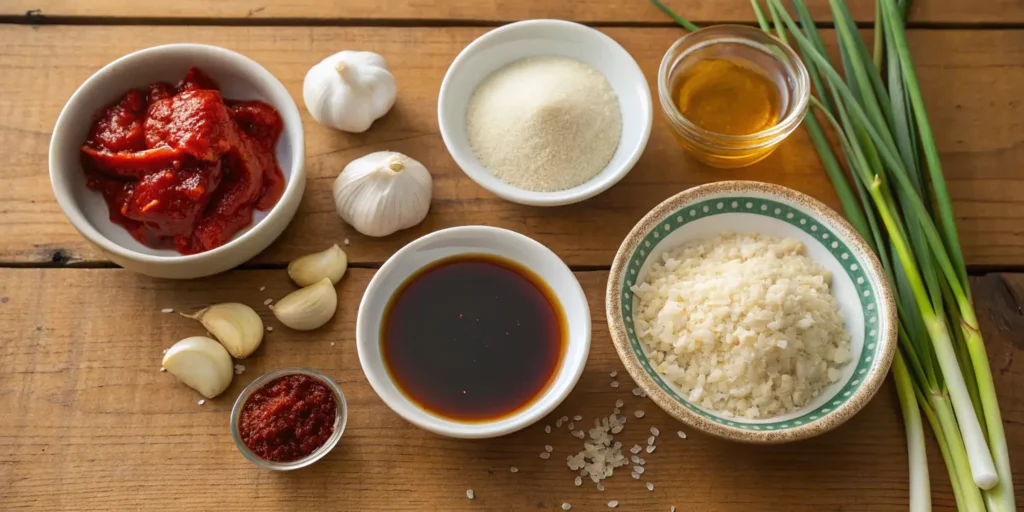
Core Ingredients and Their Roles
| Ingredient | Quantity | Purpose |
| Gochujang (Chili Paste) | 2 tbsp | Adds the characteristic spice and depth |
| Soy Sauce | 1 tbsp | Adds a savory umami note |
| Garlic | 2 cloves | Provides a rich, aromatic flavor |
| Honey or Sugar | 1 tbsp | Balances the heat with a hint of sweetness |
| Rice Vinegar | 1 tsp | Adds acidity for a balanced flavor |
| Sesame Oil | 1 tsp | Finishes the sauce with a nutty richness |
Ingredient Tips and Substitutes
- Gochujang Alternatives: If you don’t have gochujang on hand, you could try a combination of sriracha and a touch of sugar to mimic its spicy-sweet flavor profile.
- Adjusting Spice Level: For a milder version, use less gochujang or substitute with mild chili paste.
- Making It Vegetarian: Replace honey with a vegan-friendly option like maple syrup to create a vegan version of yangnyeom sauce.
Popular Dishes Featuring Yangnyeom
This flavorful blend is incredibly versatile, lending itself to a variety of dishes that highlight its flavor while adding texture and contrast.
- Yangnyeom Chicken (Korean Spicy Fried Chicken) Known for its crispy, double-fried exterior, yangnyeom chicken is a dish that has gained popularity far beyond Korea. The crispy coating is key, as it holds up well to the sticky yangnyeom sauce, delivering a delightful crunch with every bite. To make it, simply fry the chicken until golden, coat it in the sauce, and finish with a sprinkle of sesame seeds for a final touch.
- Yangnyeom Tofu For a vegetarian-friendly option, tofu with spicy sauce is the perfect choice. Tofu’s neutral flavor and firm texture make it an ideal base for this bold sauce. Simply pan-fry or bake your tofu until crispy, then toss in yangnyeom sauce for a protein-packed dish that’s bursting with flavor.
- You’ll find Spicy bibimbap transforming the classic rice dish into something spicier and more flavorful. Simply add a dollop of yangnyeom to your rice bowl, mix it with your vegetables, and enjoy an elevated version of this classic dish.
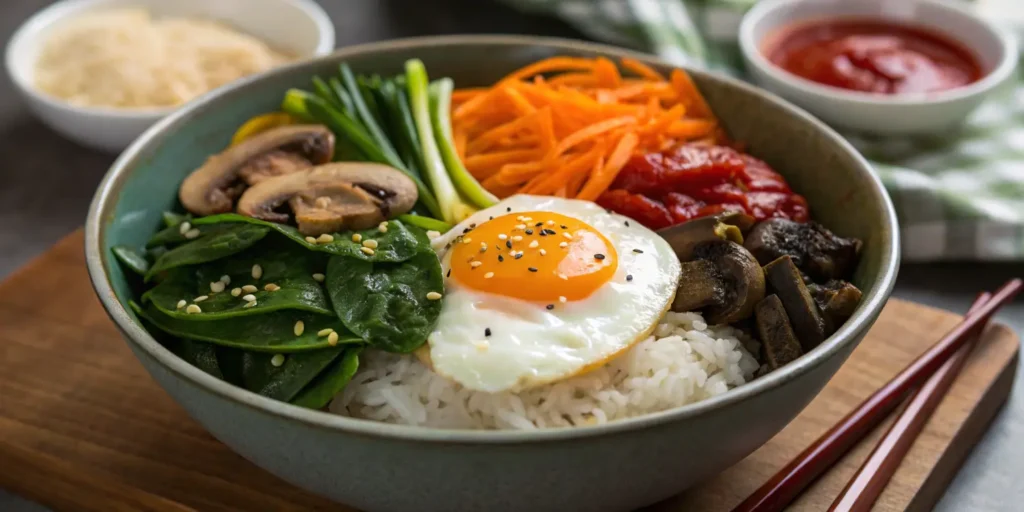
How to Make The Sauce at Home: A Simple Recipe
Making yangnyeom sauce at home is simple, and with just a few steps, you’ll have a sauce that adds both heat and depth to any dish.
Step-by-Step Recipe for Homemade Yangnyeom Sauce
| Ingredient | Quantity | Purpose |
| Gochujang | 2 tbsp | Provides depth and a signature Korean spice |
| Soy Sauce | 1 tbsp | Adds umami richness to the sauce |
| Minced Garlic | 2 cloves | Adds an aromatic, bold flavor |
| Honey | 1 tbsp | Sweetens the sauce, balancing out the heat |
| Rice Vinegar | 1 tsp | Brightens the sauce with mild acidity |
| Sesame Oil | 1 tsp | Adds a nutty richness to round out flavors |
Instructions:
- Combine Ingredients: In a mixing bowl, combine all the ingredients, stirring until the sauce reaches a smooth consistency.
- Adjust for Taste: If you prefer a spicier sauce, add more gochujang; for a milder version, consider adding a touch more honey or a sprinkle of sugar.
- Store or Serve: Use immediately for best flavor, or store in the refrigerator for up to a week in an airtight container.
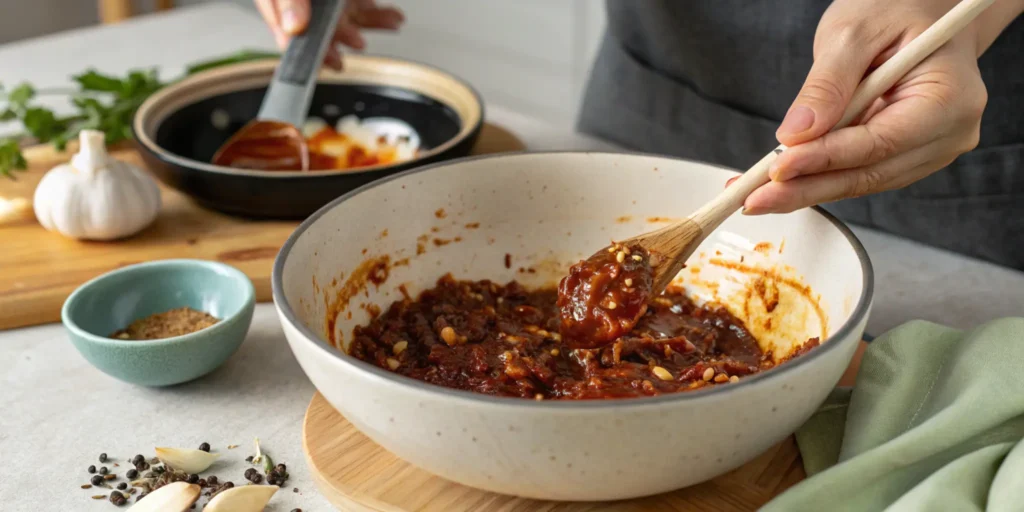
Tips for Perfecting This Korean flavor
- Balancing Flavor: Adjust sweetness and acidity as desired, keeping in mind that the sauce should be bold but not overpowering.
- Storage Tips: Yangnyeom sauce can be refrigerated for a few days, but fresh is always best for the boldest flavor.
Serving Suggestions for Yangnyeom Dishes
These kind of dishes pair well with a variety of sides and drinks, making them versatile and easy to enjoy.
- Classic Pairings Serve them with steamed white rice, pickled radishes, or kimchi for a complete, satisfying meal. Rice will help to balance the spiciness of the sauce, while pickles add crunch and acidity.
- Beverages For a traditional touch, pair your meal with a glass of soju or a light beer. If you’re looking for a non-alcoholic option, sparkling water with lemon can refresh your palate between bites.
Health and Nutritional Information
Understanding the nutritional makeup of yangnyeom sauce can help you make informed choices when incorporating it into your meals.
| Nutrient | Per Serving (1 tbsp) | Notes |
| Calories | ~50 | Caloric content can vary with sweetness level |
| Carbohydrates | 5g | Primarily from gochujang and honey |
| Protein | 1g | Soy sauce adds a small amount |
| Fat | 2g | Sesame oil contributes healthy fats |
Tips for a Healthier Sauce
- Substitute honey with a low-calorie sweetener if needed.
- Opt for low-sodium soy sauce to keep salt intake in check.
Frequently Asked Questions about Yangnyeom
What does “yangnyeom” mean?
Yangnyeom translates to “seasoned” in Korean and can refer to anything seasoned with spices, sauces, or marinades, but it’s most commonly associated with yangnyeom chicken and other spicy dishes.
Is yangnyeom sauce very spicy?
Yangnyeom is mildly spicy, with a balanced blend of sweet and savory. However, you can adjust the spice level by varying the amount of gochujang you use.
Can I use yangnyeom sauce for other dishes?
Absolutely! Yangnyeom sauce is versatile. It’s perfect for marinades, dipping sauces, and even as a topping for grilled meats, vegetables, or tofu.
How can I make a vegan version of yangnyeom chicken?
Simply substitute tofu, seitan, or a plant-based protein for the chicken, and swap honey for maple syrup or agave. The rest of the recipe remains the same, making it a simple yet delicious vegan alternative.
Conclusion: Dive into the World of Yangnyeom
Ready to experience the rich flavors of yangnyeom at home? Whether you’re preparing yangnyeom chicken, bibimbap, or simply using the sauce to add a kick to everyday dishes, yangnyeom brings Korea’s vibrant culinary heritage right into your kitchen. Try it with your favorite foods, adjust the spice to your liking, and enjoy the unique flavors that yangnyeom has to offer.
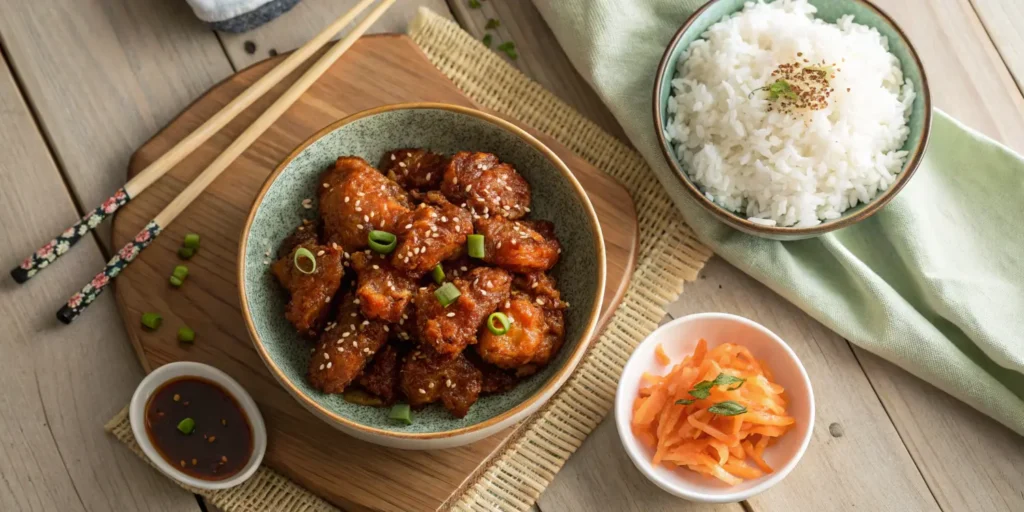
Give yangnyeom a try, and let the bold flavors transform your meals! Share your creations with friends, and let them experience the rich, unforgettable taste of Korea right along with you.
